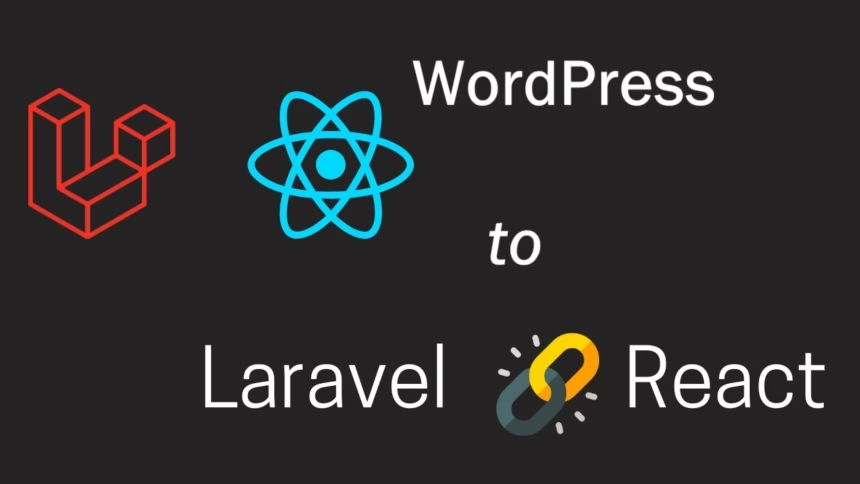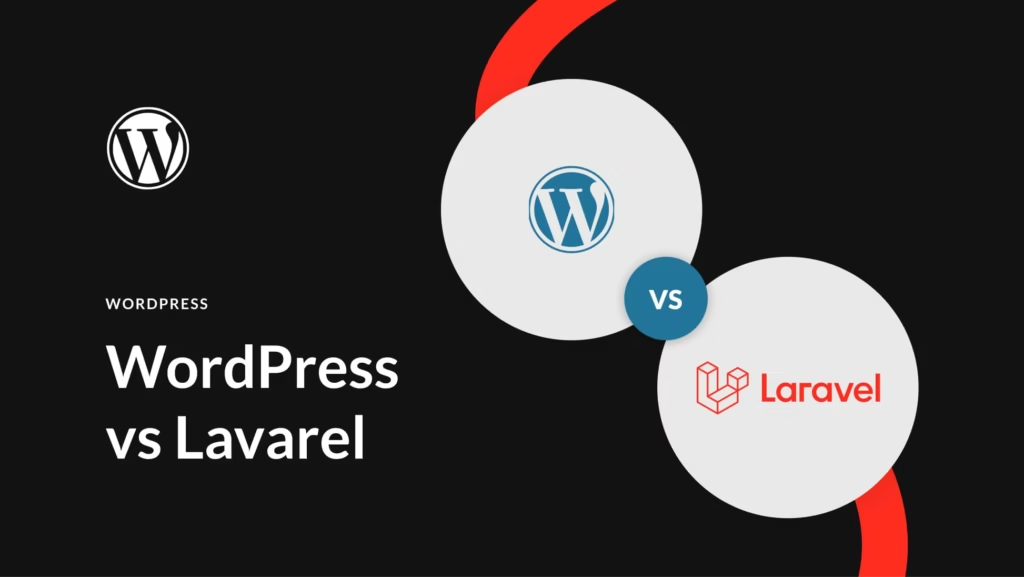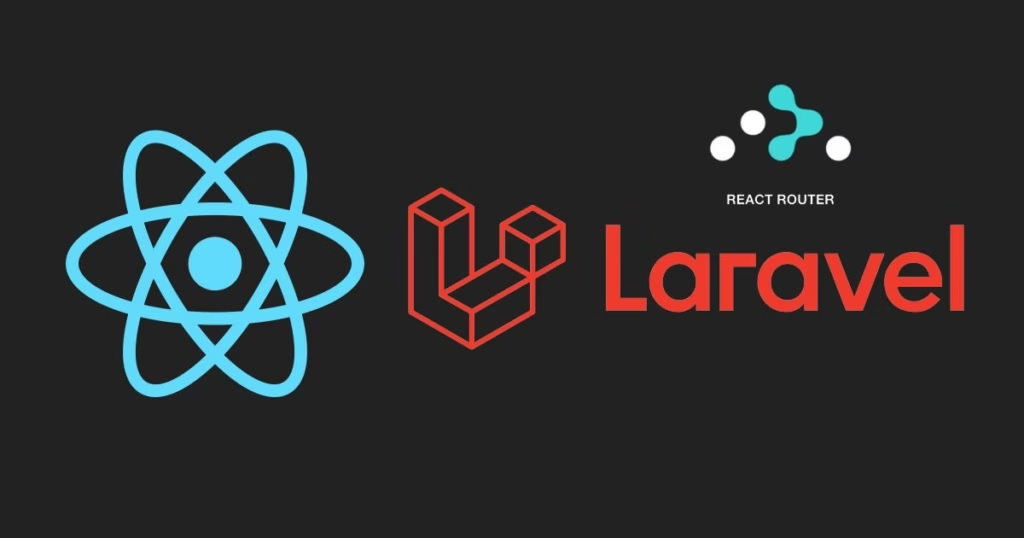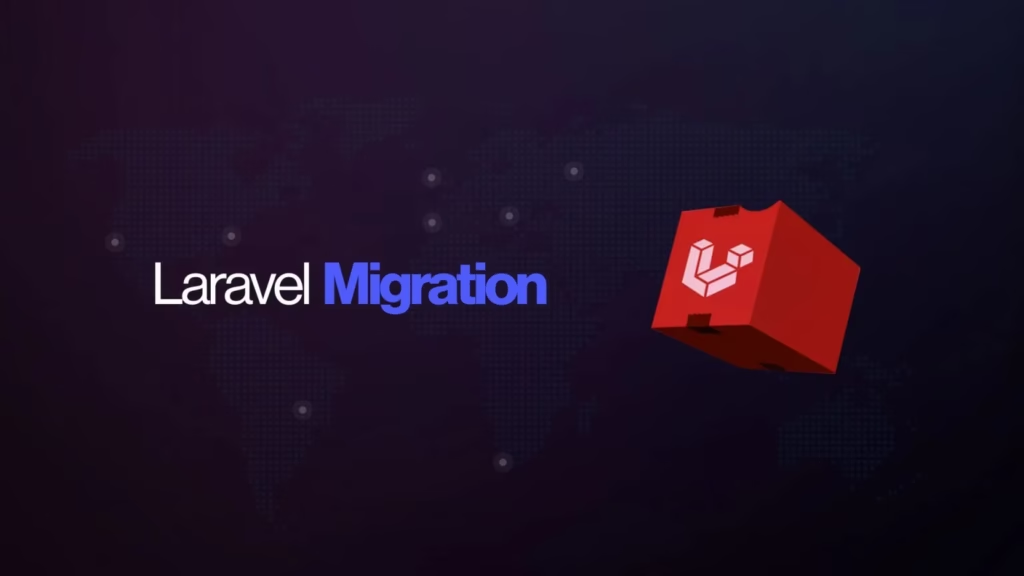Speed wins users. Security keeps them. Custom features turn them into loyal fans. That is the bar for web apps in 2025. WordPress still shines for simple sites and fast launches. For blogs, marketing pages, and small catalogues, it is hard to beat. But more teams now pick Laravel + React when they need power, control, and room to grow.
Recent signals tell the story. Tool data shows Laravel runs over 2.5 million sites in 2025. React continues to top developer surveys for fast, interactive UIs. Together, they form a stack that feels modern, quick, and flexible.
At a high level, Laravel is a backend PHP framework with a clean structure and strong security defaults. React is a frontend library that builds rich interfaces with reusable components. The pair works well because Laravel handles data, auth, and performance, and React makes the UI fast and friendly. This guide breaks down when to stay on WordPress and when a move to Laravel + React makes sense, using clear language and real examples.
What is driving the shift in 2025: speed, security, and control
Teams want faster pages, fewer headaches, and maintainable code. The move is not hype; it is practical.
- Faster pages: Laravel’s caching, queues, and efficient routing keep response times low. React delivers instant-feeling UIs.
- Fewer plugin issues: Custom logic replaces plugin stacks that break during updates.
- Cleaner code for the long haul: A structured backend plus component-driven UI ages better.
- Security by default: Built-in protections reduce common risks without extra plugins.
- Better scaling: APIs scale cleanly, and frontends can adapt as traffic grows.
One line summary: Teams choose Laravel + React for fast apps with fewer moving parts and more control.
Faster sites and better scaling with Laravel and React
Laravel gives the backend tools needed for speed. Routing is efficient, caching is built in, and database tools help avoid slow queries. That foundation keeps apps responsive during spikes.
React adds a snappy front layer. Features like live feed updates, admin dashboards, or real-time search feel instant since the browser handles state and rendering. A React UI can fetch only the data it needs, which cuts load times.
At higher traffic, this combo tends to beat plugin-heavy WordPress setups. Fewer plugins mean fewer scripts and less bloat. Many teams report smoother scaling once they shift to an API first model with a React frontend.
For a hiring perspective on Laravel’s momentum, see this overview on why teams value the framework’s speed and conventions in 2025: Why Should You Hire Laravel Developers in 2025?
Stronger security out of the box vs plugin sprawl
WordPress can be secure. The problem is that a lot of sites rely on many plugins, all of which need frequent updates. One missed update can expose a known hole.
Laravel ships with protections like CSRF tokens, input validation, and encryption. These defaults reduce risk from common threats like SQL injection. With fewer third-party parts, there is less to update and less surface area to attack.
The result is tighter control and fewer surprises during patch cycles.
More flexibility for custom features and unique workflows
Not every feature should be a plugin. Laravel makes it easy to express business logic cleanly, from policy rules to scheduled jobs. Teams can ship features that match how their company works, not how a plugin author imagined it.
React gives full control over the user experience. Complex forms, real-time views, and tailored dashboards all fit neatly into a component system.
Quick example: A multi-step onboarding that changes based on role, billing status, and region is straightforward in Laravel + React. In WordPress, that logic often sprawls across custom fields, hooks, and third-party extensions.
Developer experience and long-term code health
Laravel follows a clean MVC pattern. It gives migrations for database changes, queues for background work, and testing tools to keep behaviour reliable. Structure reduces chaos as teams grow.
React promotes reusable components and a predictable state flow. A well-built component can power many screens, which keeps design and logic consistent.
WordPress is easy to start. As custom plugins grow, though, code can tangle fast. A framework and component approach helps teams avoid long-term bloat.
For a balanced view of how both stacks serve different needs in 2025, this comparison covers tradeoffs many teams weigh: Laravel vs WordPress – Which One to Choose in 2025 and Why?
What the numbers say in 2025
Laravel powers over 2.5 million sites this year. Adoption keeps rising thanks to strong tools and community support. React remains a top choice for fast, interactive apps despite ecosystem fatigue. WordPress still leads for simple sites and content-driven projects. For complex apps, the trend leans toward Laravel + React.
For context on WordPress staying power and ongoing demand for talent, see this breakdown: Why WordPress Developers Are Still in High Demand in 2025
WordPress vs Laravel + React: which is the better fit for your project?
The best stack is the one that serves your goals. Think about speed, complexity, content workflows, and budget. Match the stack to the problem, not the trend.
Simple sites and blogs: why WordPress still wins
WordPress is built for content. Marketing pages, blogs, landing pages, and small catalogues ship fast. Editors can publish without help from developers. Themes and plugins cover common needs. Keep it secure with updates, backups, and basic hardening, and it does the job.
Complex apps, dashboards, and real-time features: why Laravel API + React UI shines
If the project needs custom roles, advanced forms, real-time notifications, analytics, or heavy third-party integrations, Laravel + React fits well. Laravel holds the business logic and data. React handles a dynamic interface without page reloads.
Common cases include SaaS tools, internal portals, marketplaces, and analytics dashboards. The value is clear: speed, control, and a clean path to scale.
Content-heavy sites that want modern UX: try a headless bridge
There is a middle path. Keep WordPress as the CMS for editors. Use React for the frontend. Add a Laravel layer for custom business logic if needed. This headless setup improves performance and design freedom, at the cost of more moving parts. It is a strong option when content teams love WordPress, but product teams want a rich UI.
If the team is exploring full-stack mixes and career paths, this piece hits trends at the intersection of WordPress, Laravel, and React:.
Total cost of ownership: plugins vs custom build
Upfront cost is not the only cost. Consider 1 to 3 years of updates, maintenance, and changes.
| Option | Year 1 setup | Year 2 maintenance | Year 3 maintenance | Risks and notes |
|---|---|---|---|---|
| WordPress with many plugins | Low to medium | Medium to high | Medium to high | Plugin conflicts, security patches, performance lag |
| Laravel + React custom | Medium to high | Medium | Medium | More skill is needed, and cleaner changes over time |
| Headless mix | Medium | Medium | Medium | More complexity, better UX and flexibility |
Simple math: WordPress saves time early. As features grow, plugin bloat and patching can add cost. Laravel + React takes more effort upfront, but it often reduces churn and change costs later.
How to decide and get buy-in from your team
Clarity beats passion in stakeholder talks. Use a checklist, tie benefits to KPIs, and show how risk will be managed.
Decision checklist: traffic, features, data, and SEO goals
Answer yes or no to each. If most answers are yes, a Laravel API with a React frontend likely fits.
- Peaks or traffic spikes expected
- Real-time updates or live dashboards are needed
- Complex roles, permissions, or approval flows
- Multiple third-party integrations or webhooks
- Custom workflows that do not fit existing plugins
- Aggressive Core Web Vitals targets
- Internationalization or multi-region needs
- Accessibility as a requirement
- Mobile-first UI with offline or background sync
- Long roadmap with fast change cycles
Make the ROI case: speed, security, and developer throughput
- Faster pages lift conversion. Even a small drop in load time can lift signups and sales.
- Fewer security incidents cut downtime and protect brand trust.
- Better tooling speeds delivery. Clean migrations, queues, and tests reduce time to ship.
Tie the plan to simple KPIs. Bounce rate, conversion rate, time to ship, incident count, and cost per feature. Make one small promise, then beat it.
For a candid community angle on expectations when switching stacks, this thread is a useful read: Web developers switching to WordPress, thinking they’ll be faster.r
Know the tradeoffs: learning curve, time to launch, and hiring
Laravel’s learning curve is higher than WordPress’s. React’s curve is moderate. Hiring may shift toward full-stack and frontend specialists. Timelines might be longer in the first phase, but future changes are usually cleaner and faster.
Practical tips:
- Start with one high-impact feature.
- Keep the legacy site running while building the new stack.
- Consider a headless bridge to reduce risk during transition.
Migration roadmap to Laravel + React with less risk and no downtime
Move in small steps. Keep users happy. Cut risk with a clear plan.
Pick the architecture: SPA, SSR, or hybrid.
- SPA: Great for app-like dashboards and internal tools. Best interactivity. SEO needs extra care.
- SSR: Best for marketing pages and SEO heavy sites. First load is fast, content is indexable.
- Hybrid: Mix both for content pages plus app areas.A common choice for SaaS marketing sites with an app.
Typical picks in 2025: React with routing and data fetching, Laravel as an API with auth, caching, and queues. Choose what matches SEO needs, page complexity, and team skill.
Plan data migration and content modelling
- Map WordPress content types to new models. Include posts, pages, media, and custom fields.
- Export content and media. Decide what lives in Laravel, and what should move to a headless CMS.
- Preserve URLs, slugs, and metadata. Protect SEO by keeping redirects, titles, and schema intact.
- Write a rollback plan. Assume one part will fail and plan the path back.
Document the content model early. Fewer surprises later.
Build the React frontend and connect to a secure Laravel API
Frontend plan:
- Set up a component library with tokens for spacing, colour, and type.
- Add routing, state, and data fetching patterns early.
- Handle loading, error, and empty states with care.
Backend plan:
- Build auth, role policies, and input validation.
- Version APIs to support future changes.
- Use CSRF for stateful flows. Add rate limits to public endpoints.
- Apply caching in Laravel and at the edge via a CDN.
Keep secrets out of code. Use environment variables and a secret manager.
Test, optimize, and hit Core Web Vitals.
- Testing: units for logic, feature tests for flows, and accessibility checks.
- Performance: optimize images, code split the frontend, and prefetch routes.
- Measure LCP, INP, and CLS. Fix layout shifts and long tasks.
- Backend tuning: index the right columns, audit slow queries, and move heavy jobs to queues.
Small wins add up. A few milliseconds saved in several places can change the feel of the entire app.
Launch and measure: the KPIs that prove success
Launch checklist:
- CI/CD in place with rollbacks
- Automated backups and a tested restore
- Logs, error tracking, and performance monitoring
- Feature flags for risky parts
Track the metrics that matter:
- Page load time and Core Web Vitals
- Error rate and incident count
- Conversion and signup rate
- Time to ship and time to recover
Hold a post-launch retro. Capture what worked and what needs fixing.
Conclusion
The picture is clear. WordPress stays great for simple content sites and fast launches. For complex, fast, and secure apps, Laravel + React leads in speed, control, and maintainability.
In 2025, Laravel’s adoption is strong, with millions of live sites, and React keeps powering modern, interactive UIs. The shift reflects a need for cleaner code and fewer plugin headaches as products grow. Next step, use the checklist, pick a small pilot, and move in stages. Start where the impact is biggest. Then build the rest with confidence.

















